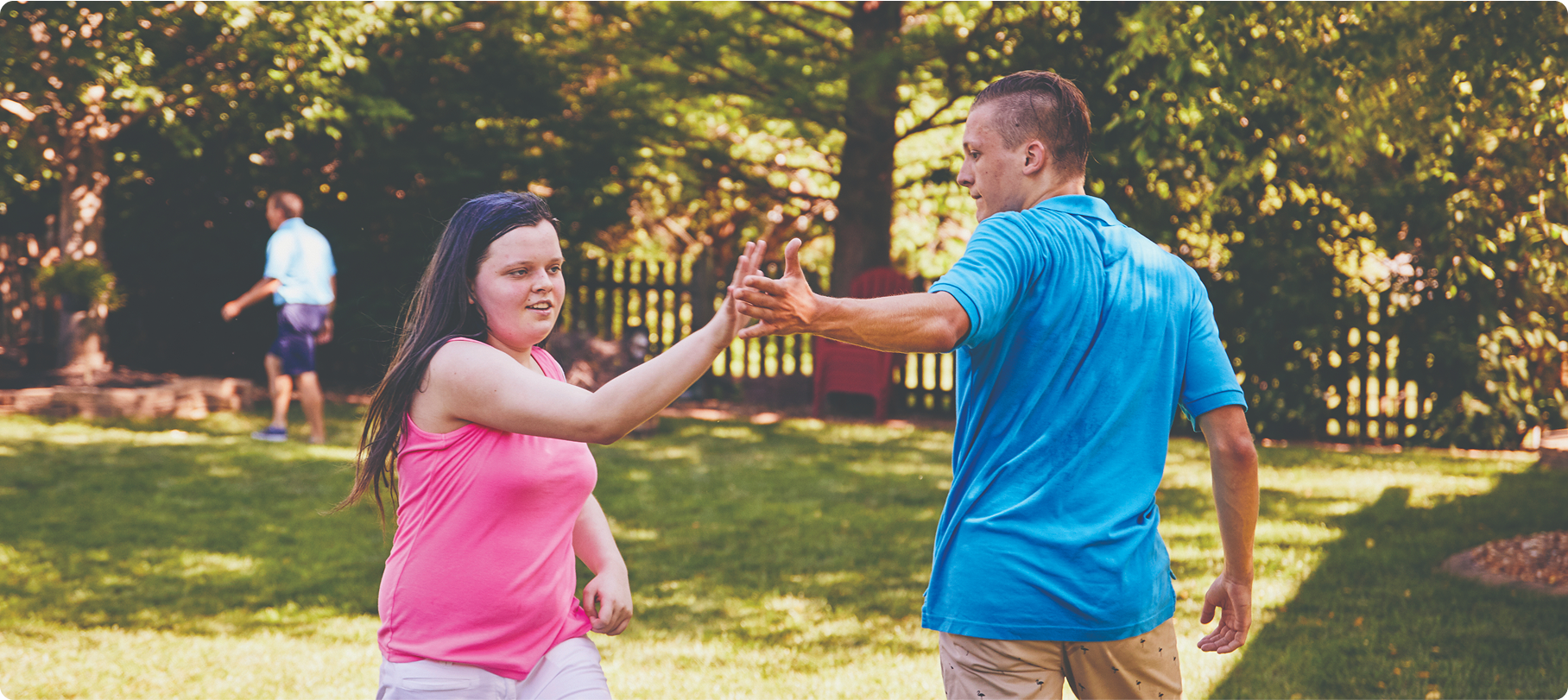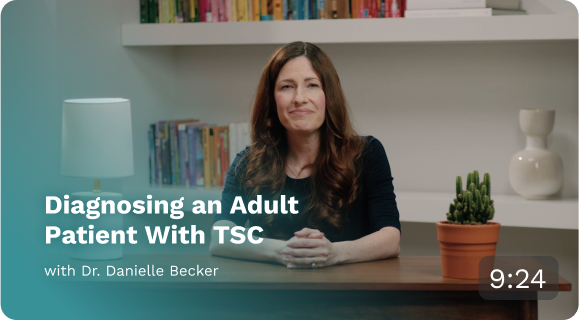Early diagnosis and monitoring can make all the difference for patients living with TSC-associated seizures
Epilepsy impacts most patients living with TSC, and may often have devastating consequences1-4
Epilepsy affects 70% to 90%
of patients living with TSC. After just one seizure, patients living with TSC have a nearly 100% chance of developing recurring seizures.1-3
A greater likelihood of developmental disabilities
is correlated with epileptic spasms, a history of seizures, greater seizure frequency, earlier seizure onset, and pharmacoresistant epilepsy.3,5
Approximately 90% of patients living with TSC
are affected by TSC-associated neuropsychiatric disorders (TAND), which may include behavioral difficulties, psychiatric disorders, and variations in intellectual ability.6,7
With multiple neurological and clinically observable symptoms, a diagnosis of TSC can start in your office.8
Patients living with TSC-associated seizures may present with numerous neurological signs and symptoms, including multiple seizure types that vary over time.9,10 Guidelines recommend that parents should be educated to recognize TSC-associated seizures, which can be highly variable.3,9,11-13

Gabby, at age 15
EPIDIOLEX patient living with TSC
Initial events may often begin as subtle EEG changes or seizures, which may easily be overlooked by parents2,14
- Partial-onset seizures,* also known as focal seizures, are likely to be encountered in over 2/3 of patients during infancy9
- Partial-onset seizures can be seen with or without impairment of awareness or can progress to generalized seizures15
- Infantile spasms may occur in 39% to 47% of patients9
*Partial-onset seizures (focal) included simple partial seizures (focal motor seizure), complex partial seizures (focal impaired), and secondary generalized tonic-clonic seizures (focal to bilateral tonic-clonic).16
Patients will likely progress to more than one seizure type, including9,10:
- Partial-onset seizures
- Atonic
- Tonic
- Clonic
- Tonic-clonic
- Despite an often early presentation, it is not uncommon for patients to receive a diagnosis of TSC in adolescence or adulthood3,11
- 12% of patients living with TSC may develop seizures in adulthood3,5
Experts recommend obtaining a baseline EEG and monitoring in all patients living with a TSC diagnosis, even in the absence of recognized or reported clinical seizures.13,17
Diagnosing TSC is achievable through several observable clinical features8
A definite diagnosis of TSC requires 2 major features or 1 major feature with 2 minor features.
A possible diagnosis of TSC may be made with either 1 major feature or ≥2 minor features.
MAJOR CRITERIA8
|
Central nervous system
|
|
Eyes
|
|
Renal
|
|
Skin
|
|
Heart
|
|
Lungs
|
MINOR CRITERIA8
|
Skin and teeth
|
|
Eyes
|
|
Renal
|
|
Endocrine
|
|
Skeletal
|
Consider confirming a TSC diagnosis through genetic testing identifying a TSC1 or TSC2 pathogenic mutation.8
† A combination of the LAM and angiomyolipomas without other features does not meet criteria for a definite diagnosis.
Treatment considerations for TSC-associated seizures
Despite trial of multiple ASMs, many patients living with TSC may continue to experience multiple seizure types that vary over time.9,18
64% of patients
will eventually initiate 3 or more ASMs in search of seizure reductions—and 35% try 5 or more for their TSC-associated epilepsy.18
More than 1 in 3 patients
who have surgery for their epilepsy will undergo multiple procedures.18
For 38% of patients
in a large TSC study, partial-onset seizures remained uncontrolled.9
The information provided is not intended to supersede independent clinical judgment or institutional protocols.
Additional resources

TSC data
EPIDIOLEX reduced the frequency of TSC-associated seizures.
See the data

Diagnosing an Adult Patient With TSC
A case study of a hypothetical patient with TSC who has been transferred to your care.
Watch now

Why EPIDIOLEX?
EPIDIOLEX has been studied across a range of patient types and concomitant antiseizure therapies.
See the data




